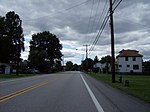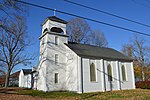Lincoln Park Performing Arts Charter School
2006 establishments in PennsylvaniaCharter schools in PennsylvaniaEducation in Beaver County, PennsylvaniaEducation in the Pittsburgh metropolitan areaEducational institutions established in 2006 ... and 3 more
Public high schools in PennsylvaniaSchools in Beaver County, PennsylvaniaSchools of the performing arts in the United States
The Lincoln Park Performing Arts Charter School is a tuition-free, American public charter school that is located in Midland, Pennsylvania, roughly thirty-five miles (56 km) northwest of Pittsburgh. It enrolls students in grades seven through twelve from home districts in Beaver, Allegheny, Washington, Butler, and Lawrence counties.
Excerpt from the Wikipedia article Lincoln Park Performing Arts Charter School (License: CC BY-SA 3.0, Authors).Lincoln Park Performing Arts Charter School
Railroad Avenue,
Geographical coordinates (GPS) Address Nearby Places Show on map
Geographical coordinates (GPS)
| Latitude | Longitude |
|---|---|
| N 40.6358 ° | E -80.45 ° |
Address
Railroad Avenue
15059
Pennsylvania, United States
Open on Google Maps








